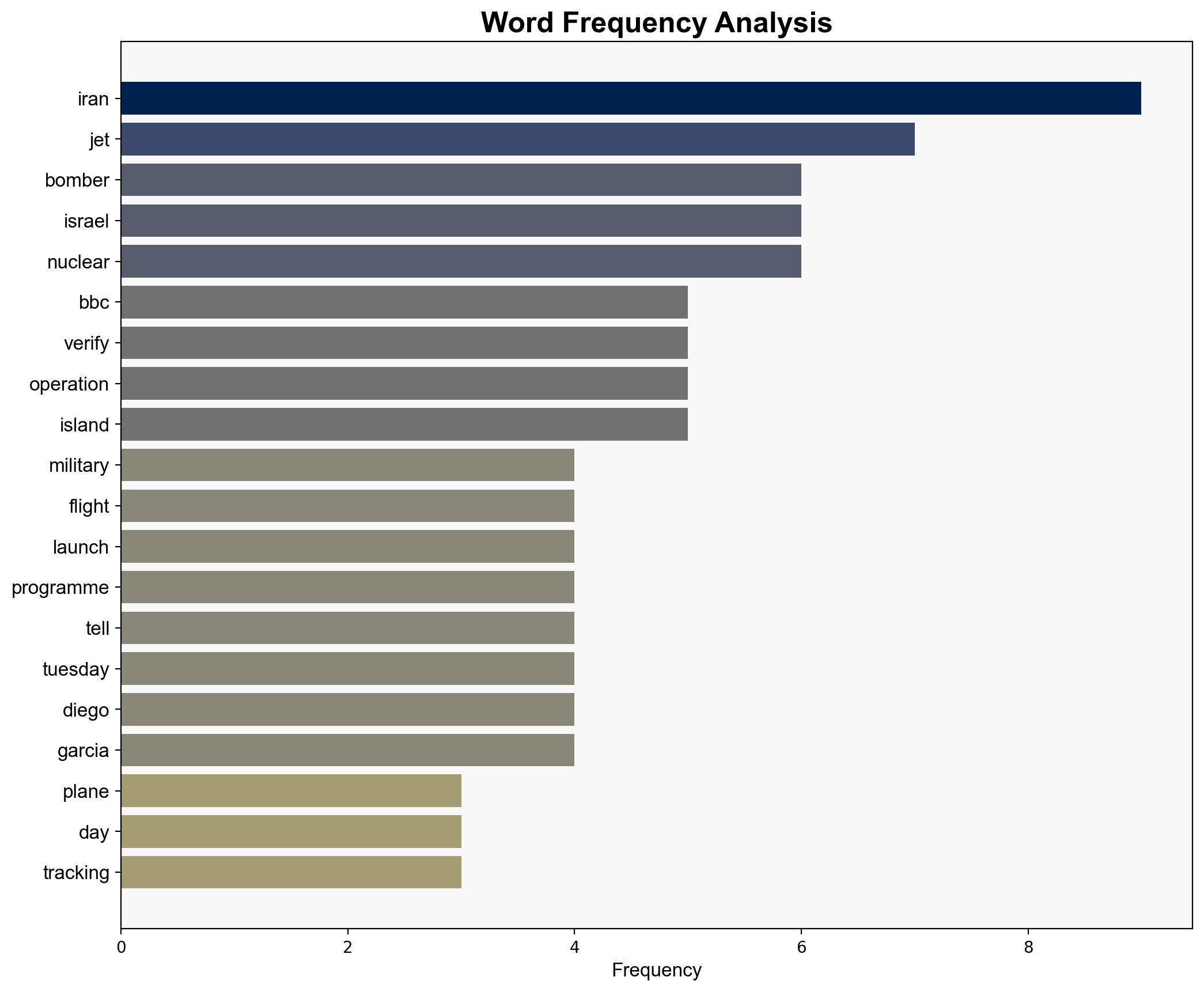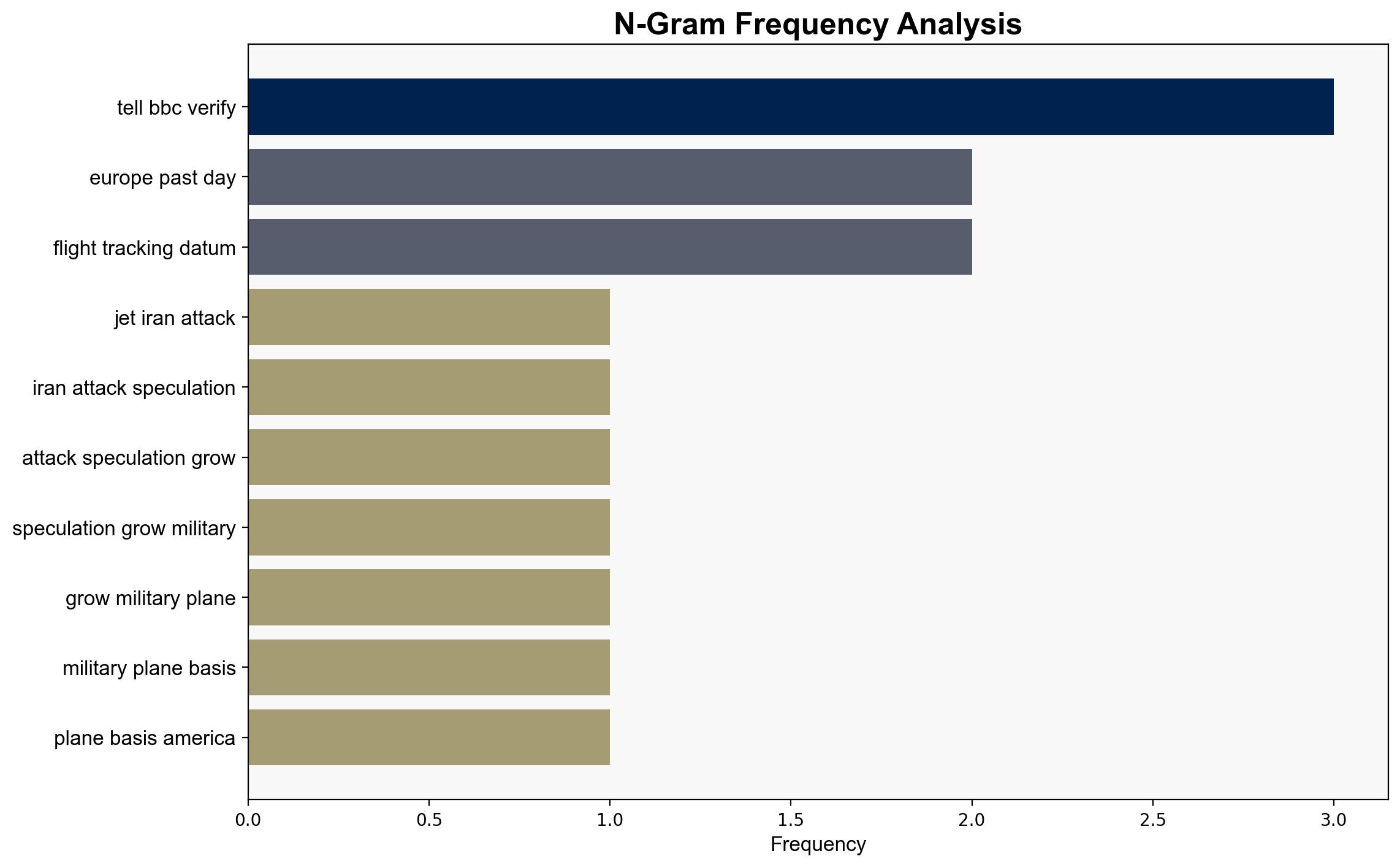US moves 30 jets as Iran attack speculation grows – BBC News
Published on: 2025-06-17
Intelligence Report: US moves 30 jets as Iran attack speculation grows – BBC News
1. BLUF (Bottom Line Up Front)
The movement of 30 US military jets, including tanker aircraft and bombers, from bases in Europe to strategic locations suggests preparation for potential military operations in the Middle East. This activity coincides with heightened tensions between Israel and Iran, raising concerns about possible preemptive strikes on Iranian nuclear facilities. The deployment may serve as a strategic deterrent or a contingency plan to support allies in the region. It is recommended to closely monitor further military movements and diplomatic communications to assess the likelihood of escalation.
2. Detailed Analysis
The following structured analytic techniques have been applied to ensure methodological consistency:
Causal Layered Analysis (CLA)
Surface events include the relocation of jets and the USS Nimitz’s movement towards the Middle East. Systemic structures involve US-Israel defense cooperation and Iran’s nuclear ambitions. Worldviews reflect US strategic ambiguity and deterrence posture. Myths pertain to the perceived inevitability of military confrontation in the region.
Cross-Impact Simulation
Potential ripple effects include increased regional instability, impact on global oil markets, and shifts in alliances. Neighboring states may face pressure to align with US or Iranian positions, affecting regional security dynamics.
Scenario Generation
Scenarios range from diplomatic resolution and de-escalation to full-scale military conflict. Key variables include US diplomatic engagement, Iranian responses, and Israeli military actions.
Narrative Pattern Analysis
Ideological narratives focus on Iran’s right to nuclear development versus regional security threats posed by its nuclear capabilities. These narratives influence international support and opposition.
3. Implications and Strategic Risks
The movement of military assets increases the risk of miscalculation and unintended escalation. Potential cyber threats may target military and civilian infrastructure. Economic vulnerabilities include disruptions to oil supply chains. Cross-domain risks encompass military, economic, and cyber dimensions, potentially leading to broader regional conflict.
4. Recommendations and Outlook
- Enhance intelligence-sharing with regional allies to improve situational awareness and coordination.
- Engage in diplomatic efforts to reduce tensions and explore avenues for de-escalation.
- Prepare for scenario-based outcomes: Best case involves diplomatic resolution; worst case entails military conflict; most likely scenario includes continued strategic posturing and limited skirmishes.
5. Key Individuals and Entities
Justin Bronk, Mark Mellett, JD Vance, Greg Bagwell, Merlyn Thomas
6. Thematic Tags
national security threats, military strategy, Middle East tensions, US-Iran relations





